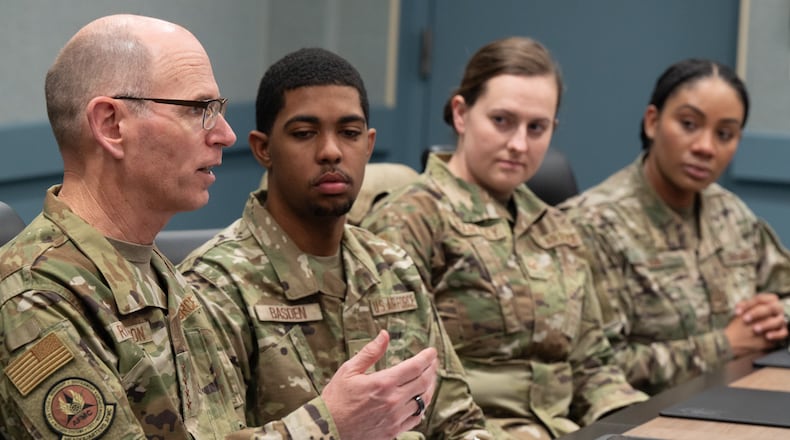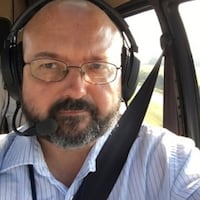As commander of AFMC, Richardson, a four-star general, oversaw one of the Air Force’s major commands, an enterprise with an $81 billion annual budget and a global workforce of 89,000 people who research, equip and sustain Air Force planes, weapons and equipment.
“I think I’m still coming to grips with it,” Richardson said in a command release.
He assumed command in June 2022 in a ceremony at the National Museum of the U.S. Air Force, succeeding Gen. Arnold W. Bunch, Jr., who retired that day.
While the command announcement does not mention a new commander or a change-of-command ceremony, a command spokesman said Wednesday that Hurry will assume the duties of command. She serves as deputy commander of AFMC.
“Lt Gen Linda Hurry will assume the duties of the commander until such time a permanent commander is nominated and confirmed,” an AFMC spokesman said.
When he took command of AFMC three years ago, Richardson had most recently served at the Pentagon as a military deputy in the Office of the Assistant Secretary of the Air Force for Acquisition, Technology, and Logistics.
He pinned his fourth star during a private ceremony with family members before assuming command that day, becoming a full general. He is the highest ranking officer on Wright-Patterson.
Headquartered at Wright-Patt, AFMC manages more than a third of the Air Force budget, managing and dispersing funds across multiple installations.
Wright-Patterson is the largest single-site employer in Ohio, with more than 35,000 military and civilian employees.
“My job is to listen, set clear intent, and empower the team,” Richardson said in the release. “While I don’t think I fully achieved all of them (goals), they shaped every decision I made.
“If you’re serving, your job matters,” he added. “AFMC doesn’t just build the spear; we are the handle, the shaft, and the tip. We may not be the ones who employ the weapon, but we provide the entire system that enables it.”
Richardson’s career started in 1983 with his enlistment as an avionics technician. He earned an electrical engineering degree under the Airmen’s Education and Commissioning program and attended Air Force Officer Training School where he earned his commission as a second lieutenant in September 1989.
His career in acquisition and materiel brought him to Wright-Patterson for the first time in 1997 where he supported the F-15 System Program Office. He also had leadership roles in the Aeronautical Systems Center and Air Force Life Cycle Management Center at Wright-Patterson, including as AFLCMC vice commander.
Hurry is very familiar with Wright-Patterson. She was a student at the Air Force Institute of Technology from March 1994 until August 1995. She became deputy commander of AFMC in January 2024.
When delegates from NATO’s Parliamentary Assembly visited the Hope Hotel at Wright-Patterson in May, Hurry was there.
Hurry called the 1995 Bosnian peace talks, held at the Hope, “one of the most consequential moments in history.”
“Our installation and our city stepped up to create an environment for compromise and the hope of peace,” Hurry said that day, adding later that former President Bill Clinton “had a vision for peace, and Wright-Patterson Air Force Base helped bring that to life.”
About the Author



